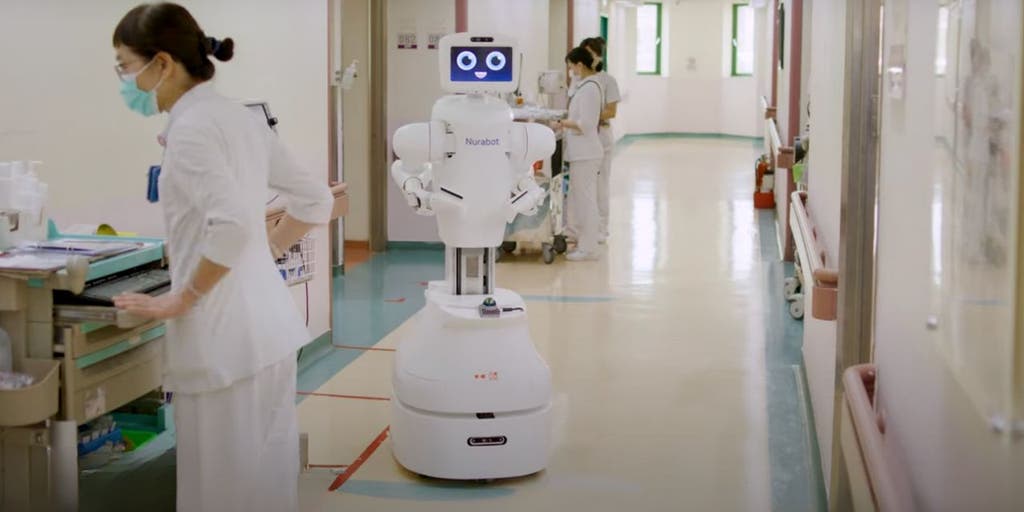Consumerization of health has been a key part of the discussion when it comes to patients’ wishes. To hit the mark, patients expect convenience and better understanding of their overall health using digital solutions. With over one third of US adults using apps and wearables, using devices and apps to measure themselves, the connected patient can no longer be considered a niche or the future, it’s mainstream.
A key moment that got us here was the summer of 2020, amid the Covid-19 shutdown, when the NBA tried to recoup part of its lost season by conducting its playoffs in a “bubble.” Practices and games were held in a controlled environment in Florida, the players had limited contact with anyone outside of their immediate teams, and regular testing was mandatory.
Key to maintaining this bubble’s integrity: health monitoring devices that the players wore during this experience. These smart rings and trackers were often able to detect anomalies days before a positive Covid test, allowing doctors to isolate potentially sick players and lower the risk of viral spread.
The NBA bubble’s medtech experience was a promising example of a transformation that is now sweeping the healthcare establishment at large. Just as smartphones have put a world of information at consumers’ fingertips, a range of wearable devices and platforms has given patients timely access to their health readings, statistics, and more, whenever and wherever they choose.
These days, patients no longer want to rely upon only whatever snippets of information they get from their doctor at an annual or semiannual checkup. They’re looking for a fully connected patient experience. And healthcare organizations need to know what that looks like, how to build it, and how they fit into the full picture. Here are three tips that can help.
1. Meet today’s patient expectations
Alongside their physicians, patients have always been a part of their own care ecosystem. But the patient experience looks a bit different these days. More than just a bystander, today’s patients are often active participants in their care, and at all times – not just when they’re visiting or communicating with a healthcare professional. And technology is one of the main reasons. A few examples:
- Wearables – such as Apple Watches, Oura rings, and FitBit trackers – allow users to continually track and monitor a wide array of health and fitness variables in real time.
- Digital health apps – including Noom, Strava, MyFitnessPal, and others – allow users to upload their data for tracking, insights, and advice.
- Gen AI offers yet another growing frontier in this space: 52 percent of Americans have asked tools like ChatGPT for a diagnosis based on their health info, and 53 percent would trust AI to develop a corresponding treatment plan.
All of these tools offer a lot more real-time data than patients have had access to in the past. And healthcare organizations need this data to flow back to them in order to provide the kind of effective personalization patients are looking for. Beyond the raw data, this effort requires powerful analytics tools that make it quick and easy to connect the dots and go from data to knowledge to action.
Something worth considering, though: patient expectations are going to be based on their digital experiences outside of the healthcare field. They’ve grown accustomed to highly connected experiences on platforms like Amazon, Netflix, and Google, and they expect healthcare providers to meet a similar standard. This is why healthcare organizations need to raise the bar now to meet that heightened standard – or risk falling behind.
2. Acknowledge the roadblocks – and address them
The road to a connected patient experience, however, is not necessarily a smooth one. And one of the main obstacles is a familiar one when it comes to technology. That is, while patients want to be more connected, they often still have trust issues.
For example, tech-savvy patients who do a lot of different things online may be concerned about data privacy and have questions about how exactly their data is going to be used. On the other side of the coin, meanwhile, less tech-focused patients are likely to need help just getting up to speed, especially if they’re unfamiliar with things like wearable devices and digital health apps.
In addition to addressing these disparate patient concerns, healthcare organizations also need to address their own data silos and fragmentation issues. Data unification and excellent governance practices are key to bringing patients’ health information together in a more convenient and digestible way.
3. Build an experience rooted in access and trust
Healthcare organizations looking to provide a successful connected patient experience should be focused on integration and app modernization to ensure their tech is:
- Accessible – Every step of the experience should be easy for patients at any level of technological sophistication to integrate into their lives, routines, and budgets.
- Open – Platforms and apps should allow multiple data sources to connect and work together.
- Secure – Even more than with their financial information, patients need to have the utmost confidence in the integrity and privacy of any system using their health data – and it’s up to the organizations providing those systems to earn that trust. Speak plain English; don’t hide behind jargon and lengthy legalese.
Beyond present considerations, healthcare organizations should also be planning their connected patient experience with an eye toward the future. Again, Gen AI is likely the next big frontier in this journey.
Apart from enhancing patient interactions, Gen AI can also help physicians analyze disparate datasets, cross-reference with historical health data, identify trends or red flags, and suggest potential diagnoses or care plans. Find ways to explore these capabilities now, and you’ll avoid playing catch-up as the technology becomes ever more ubiquitous.
A connected patient experience today will pay dividends down the road
The preferred point of care these days has moved from specific settings and times to anywhere and everywhere it’s convenient for the patient. For healthcare organizations, this should be a call to action. The apps and platforms they’re offering right now are not necessarily the ones patients will want or need going forward.
That’s why now is the time to focus on the connected patient experience. As technology and patient habits continue to evolve, the most competitive organizations will have systems that can change right along with those developments.
Photo: FG Trade, Getty Images
Luiz Cieslak is an SVP at CI&T a global digital specialist. CI&T’s Life Sciences and Healthcare team partners with pharmaceutical companies, consumer healthcare firms, and medical device manufacturers to create better experiences for patients and healthcare professionals.
This post appears through the MedCity Influencers program. Anyone can publish their perspective on business and innovation in healthcare on MedCity News through MedCity Influencers. Click here to find out how.






